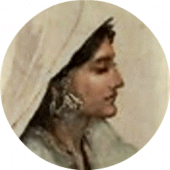
Old Kashmir Photos 1.6 APK
- Version: 1.6
- File size: 1.13MB
- Requires: Android 4.0+
- Package Name: com.app.oldkashmirimages
- Developer: OKI Team
- Updated Mar 13, 2021
- Price: Free
- Rate 4.80 stars – based on 314 reviews
Kashmir is known all over the world for its beauty and charm. The Kashmir valley is situated about 300 km. from Jammu across forested ravines and steep mountain passes. The emerald valley of Kashmir is cradled in the Himalayas, under the crystal blue skies, against the background of snow-capped mountains. It is a magic land of silvery streams, rivers, fresh water lakes, pine, deodar and chinar forests, snow clad mountains, sparkling waterfalls, shikaras, green meadows and grassy slopes full of flowers of vibrant colours. It is an oval plateau over 5000 feet high and framed by three Himalayan ranges – the Karakorum, Zanskar and Pir Panjal. Kashmir covers an area of 222,236 square kms and is often referred as the 'Switzerland of the East'. It is the land of bewitching beauty with exotic fruits, flora and flowers. Srinagar, the capital of Kashmir is nestled amidst the huge lakes, meadows and unique floating gardens in the valley. The state of Kashmir is mainly dominated by the Muslims and Kashmiris. Kashmiri, Dogri and Urdu are the main languages which are spoken here. The best time to visit Kashmir is during summers.
Kashmir formed part of the empire of Emperor Ashoka, about three centuries before Christ. He spread Buddhism in Kashmir, Tibet, China and Central Asian Republics. In the 7th and 8th centuries, there was a succession of Hindu kings who gave Kashmir its first impressive monuments. Then followed a dark era in which power passes from one ruthless commander to another till a Tibetan Muslim prince took over. He died in 1338 and Commander Shah Mir usurped the kingdom and stated a Sultan dynasty. The eighth Sultan of this dynasty was Zainul-Abdin, also known as Badshah or the Great king. He patronized art, music and encouraged studies in Hindu and Buddhist scriptures. The king was very popular with the local people as they considered him their patron saint who introduced such arts like shawl making, embroidery, carpet-weaving, paper-mache, silver and wood carvings. He invited guilds of craftsmen from Persia and Samarkand to settle down in the Kashmir valley. When Mughal Emperor Akbar conquered Kashmir in 1587, he lost his heart to the valley. He declared Kashmir as his private gardens and indulged himself in boating, water fowling and watch the saffron being harvested in the fields. Various Mughal kings made Kashmir their home to avoid the heat and dust of summer. Akbar's son Jehangir also found the natural paradise of Kashmir captivating and built various gardens in Srinagar. While, one day on his way to Kashmir, he become ill and when he was asked to express his last wish, he said, “Kashmir… and nothing else.” The Mughal kings created elaborate pleasure gardens, marble pavilion and intricate irrigation systems in the valley. They also succeeded in converting the majority of local Hindus into Islam. As the Mughal power decline, Afghans captured the valley till they were ousted by the Sikh Maharaja Ranjit Singh. Kashmir became part of the Sikh empire. When the Sikhs lost their war against the British in 1846, the British demanded an indemnity of 500,000 pounds. Since they could not meet this demand, the Sikhs offered Kashmir to the British. The Dogra Maharaja of Jammu offered the British twice the indemnity amount and thus became the Maharaja of Jammu and Kashmir. His descendants ruled over the State till 1947 and became part of the Indian Republic. The state also became the battleground between India and Pakistan during 1948, 1965 and in 1971 wars when Pakistan lost. Pakistan is still trying to grab Kashmir by aiding and abetting terrorism in Kashmir. Since 1997, when elections were held in the state, Jammu and Kashmir is under an elected government. Law and order situation is better now and foreign as well as Indian tourists are visiting Kashmir in large numbers.
